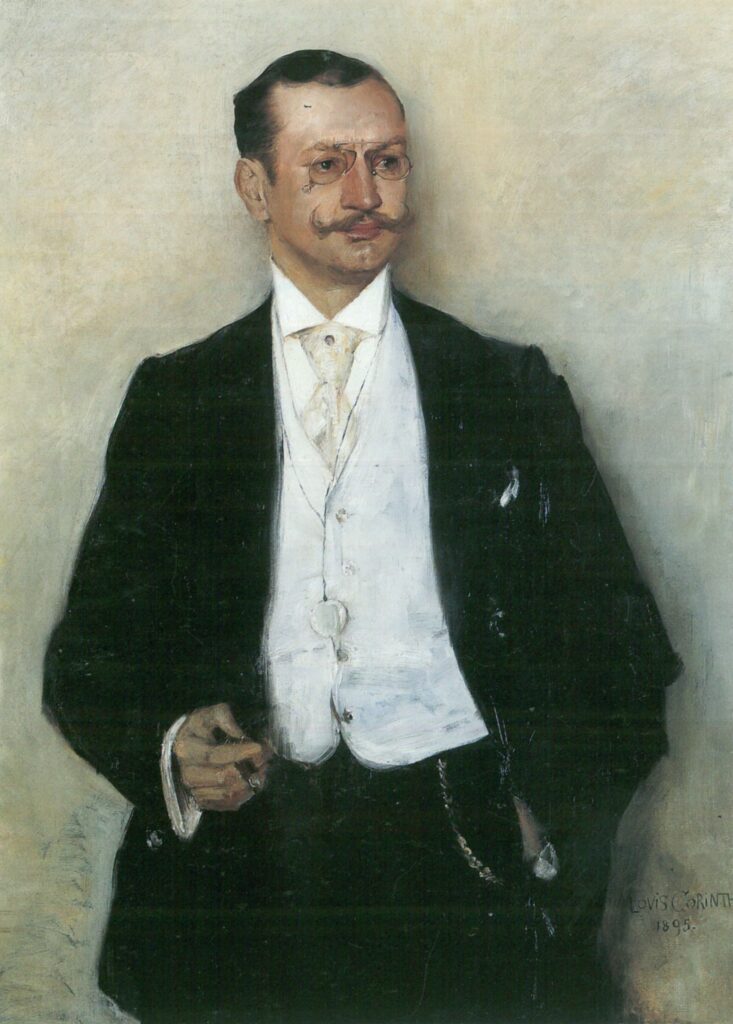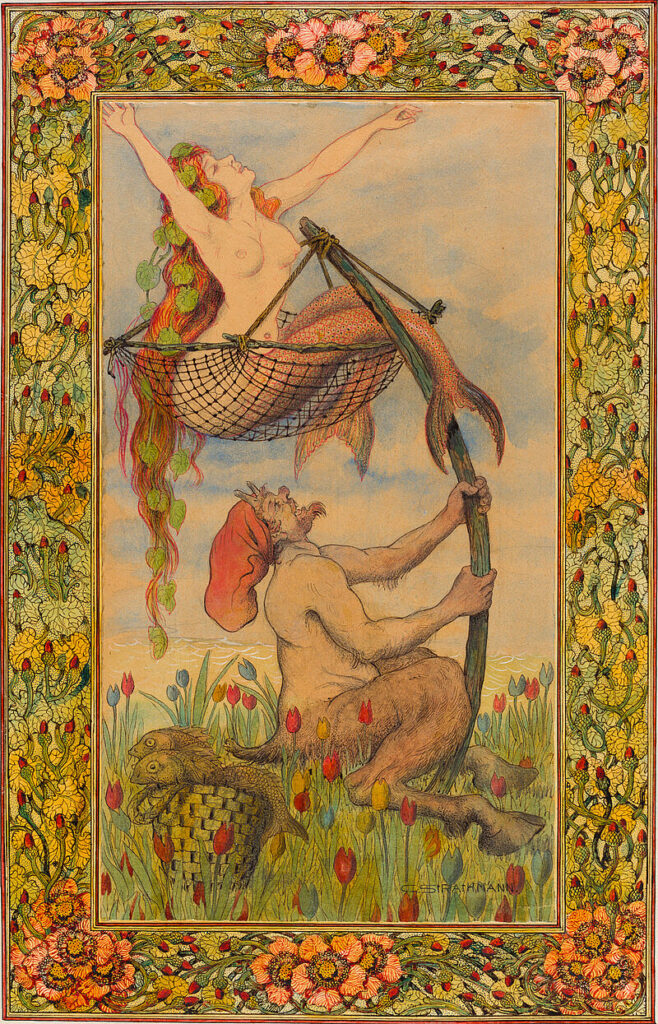Masterpiece Story: The Climax by Aubrey Beardsley
Aubrey Beardsley’s legacy endures, etched into the contours of the Art Nouveau movement. His distinctive style, marked by grotesque imagery and...
Lisa Scalone 22 February 2024
Tired of the forever beautification of women in Art Nouveau worlds of flamboyant ornaments and stylized flowers? Then you should be looking at Carl Strathmann, bohème painter and graphic designer in Belle Époque Munich! His palette of grimacing Medusas and partying demigods takes us on a wild merry-go-round ride at the turn of the century.

Lovis Corinth, Portrait of Carl Strathmann, 1895. Wikimedia Commons (public domain).
Carl Strathmann (1866-1939) was raised in a wealthy merchant family in Leipzig in the German Empire. He attended the art academies in Düsseldorf and Weimar in the 1880s, the former being one of the most prestigious art institutions in the country. His decision to move to Munich around 1890 came just at the right time: the Bavarian capital was about to transform into one of the most exuberant art metropolises in Europe. No child of sadness, Strathmann threw himself into the excessive life of the urban jungle and became notorious for his drunkenness and party mood. Here, he made friends with like-minded artists and rakehells such as Impressionist Lovis Corinth and cartoonist Thomas Theodor Heine.
Despite wild nights, he did not get lost in the swamp of the city. Soon, he exhibited at major artist associations across Germany, such as the progressive Munich and Berlin Secessions. Besides the traditional media of painting, watercolor, and print, the artist was also an active designer of furniture, carpets, and bookmarks. Being part of a young generation of future-oriented artists, Strathmann fully embraced the new movements around Symbolism and Art Nouveau. In the spirit of the time, he obsessed himself with ornaments with which he lavishly decorated the inner frames of his pictures. However, he went a little too far and did not always earn critical applause for his microscopic attention to detail. Some might call it OCD, others a romantic pursuit of beauty when he applied real gems and fabrics to his ornament-ridden paintings!
The content of Strathmann’s works does not knock us off our feet: some mythological creatures frolicking on a meadow, others seemingly taking a walk… all quite 1900, aren’t they? Looking at the style of these pictures, however, one can’t help but burst out into laughter at their protagonists’ ridicule. A comical satyr stares at the buns of an alluring mermaid whom he has just caught, a sneaky little serpent from Eden gives some Gizmo vibes, and Medusa herself seems to have just suffered a stroke… Strathmann clearly took aim at all the “venerable” themes dominating art at the time to expose them to mockery.

Carl Strathmann, A Rare Catch, ca. 1915, Munich City Museum, Munich, Germany.
Because this is not the world of “sublime” history painting for a self-obsessed, exclusive social elite, but quite the opposite. By transforming classical art themes into humorous parodies, Strathmann challenges the rules of the art establishment. A look at his watercolor A Pageant of Bacchantes makes this clear: a group of bacchantes, adherents of the Roman god of wine Bacchus, glides through a clearing. All wear classical or Middle-Eastern-inspired garb. A common theme and depiction around 1900. So far, so good. But when you get closer to the picture, you get drawn into a carnival of the bizarre: exaggerated faces with huge noses, deep wrinkles, and moronic gazes… except two women, all the figures conform to this satirical stereotype. Is Strathmann continuing the Renaissance tradition of grotesque heads, or is he rather making fun of the drunkenness of his characters? Probably the answer, as so often, lies somewhere in the middle. This depiction has certainly offended one or the other bourgeois “art connoisseur.”
It does not come as a surprise that Strathmann attracted the attention of satirists. His friend Heine was the editor and illustrator of the Simplicissimus, one of the leading satirical magazines in the country. Strathmann just found the right format to prove his talent. He also contributed illustrations to art magazines, Pan and Jugend, both important media to spread Art Nouveau. Unfortunately, the originality of his work was not welcome. Despite his frequent exhibitions throughout Germany, his paintings were no bestsellers. In his later life, Strathmann sadly confirmed the myth of the impoverished artist and died in Munich in 1939. His daughter Alice bequeathed the estate of 447 works to the Munich City Museum, which resurrected the artist with a major exhibition in 2019. The exhibition bore the title Art Nouveau Whimsical – just fitting for the old rascal Strathmann!
DailyArt Magazine needs your support. Every contribution, however big or small, is very valuable for our future. Thanks to it, we will be able to sustain and grow the Magazine. Thank you for your help!